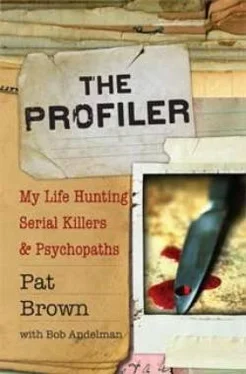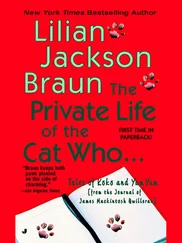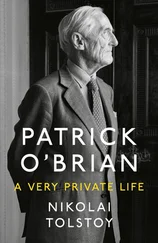The time of death was also crucial in determining whether this crime was a stranger homicide, a hit, or a killing of a personal nature. While Frank Bishop was fully dressed, he was not in clothes one would expect for a man planning to attend a funeral that morning. Renee Washington was dressed for bed, in a nightshirt, panties, and a cap to cover her hair while she slept. Frank Bishop had nothing in his stomach. Renee had a yellow substance and a white meat substance and green pepper. Renee’s family has stated that Renee was not a big breakfast eater, but when she did eat, she would have cooked and eaten with Frank, not alone. There was no evidence of dishes or pans being used that morning. Renee most likely consumed an omelet late in the evening before coming to Frank’s place. The state of dress and the food remaining in Renee’s stomach put the time of the deaths relatively early in the morning. Add to this the statement of a neighbor that she heard “fussin’” sometime between one and three in the morning, and it was not a homicide that occurred at seven a.m.
Since Frank would not have permitted anyone access to the house that he did not expect, we could safely determine that this was not a stranger homicide.
We know of only one person who was there late that evening/early morning: Donnell Washington.
My hypothesis is that Donnell was responsible for the deaths of Renee Washington and Frank Bishop. Because I saw no bloody footprints or blood spatter in the hallway, on the door frames, on the doors, or outside, it was possible that Donnell simply did not get that much blood on him during the murders. He may have grabbed a towel and wiped off enough to be able to leave without a trail of evidence. It was possible this was why no blood was found in Renee Washington’s car. It was also possible that he did not leave in her car but left with friends who brought him. He may have picked up his mother’s car later.
I’d love to hear that the detectives finally paid attention to my profile and actually brought Donnell in. This was a well-documented case and the police did a good job with the physical evidence. They had good photography. The autopsy report was great. Everything about the case was handled well, except for the fact that they did not do a crime reconstruction or profile the case. That was all left undone. The doing part was done well; it was the thinking part that was missing.
In my opinion, Donnell was a violent person who needed to be locked up for life.
Drug dealers didn’t kill Frank Bishop and Renee Washington.
Incensed gamblers didn’t kill Frank Bishop and Renee Washington.
I believe Donnell killed Frank and Renee.
He had just wanted the damn car keys.
CHAPTER 12.SABRINA:THE MIND OF A TEENAGE GIRL
The Crime: Teen suicide
The Victim: Sabrina Oliver
Location: Home
Original Theory: Suicide
One of a criminal profiler’s most difficult jobs is telling a family that their child really did commit suicide.
I received an e-mail from a mother whose daughter, Sabrina Oliver, was found by her uncle Rufus:
A friend gave me your e-mail address. I don’t know if you can help or maybe direct me to another source. My 14 yr old daughter was supposedly found hanging from her bedroom wall by her uncle. He was the last one to talk to her and the only one to see her hanging. Reasons for doubt:
No damage at all to her throat.
Egg size knot above her right brow with bruising.
Small hammer found next to body when I entered the room.
Error filled records, from EMT’s, hospital, medical examiner, 911 tape, and police report. (Funeral director wrote letter stating facts about knot on head, but did no good.) Example of errors with records in my possession: EMT received call at 4:05 a.m. (their record), 911 call made at 4:11 a.m. (police record), body found at 4:15 a.m. (police report).
Uncle that found her went off the deep end about two months ago and is now in a mental institution (no history of mental illness).
There is so much more, but I’m trying to make this brief. The sheriff’s department will not help. They say there is no evidence. WRONG! They just want to wash their hands of it.
My daughter was pretty, talented, smart, and had made future plans as well as weekend plans. Is there anything you can suggest that I do?
Thank you for taking the time to read this.
Penny Oliver
PROFILERS GET CALLED in on suicides more than any other kind of death, including homicide.
These are especially difficult cases to deal with, because sometimes the family is right. A person who commits a homicide may stage the event as a suicide and do a pretty good job of it and actually fool people. Certainly, a few of those do slide by. But what I’ve found as a profiler is that the majority of them are exactly what the police said they were-suicides.
Why does a family doubt suicide even when the police are thoroughly convinced? There is usually an overwhelming amount of evidence proving suicide. But quantity and quality doesn’t matter to a family in shock; they just won’t believe a loved one opted out of life.
Families have a difficult time accepting suicide. They can’t believe that they didn’t know that a loved one wanted to commit suicide or that they couldn’t stop their loved one from committing suicide or, even worse, that they contributed to their loved one wanting to commit suicide.
In the aftermath of such tragedy, they feel a heavy weight of guilt that they did something wrong and pushed a family member over the edge. I wasn’t a good enough mother (or father or wife or husband)! I didn’t love her enough. I didn’t show her enough caring, and therefore she killed herself.
They prefer to think that the person was murdered.
For the people whose children commit suicide, guilt sits on their chests like an elephant’s foot, and they’d rather have almost any other answer than accept that their loved one killed herself.
SABRINA OLIVER WAS a fourteen-year-old girl who was found hanging in her bedroom. She had looped her raincoat belt around her neck and hanged herself on the curtain rod; and, considering how many children die playing choking games, it’s sadly not an unusual suicide route for a child to pick anymore. Hanging is a fairly well-known way of committing suicide and quite simple. It doesn’t require a special weapon, it doesn’t require drugs that might be hard to obtain, and it doesn’t involve having to do something terrifyingly scary like leaping off a bridge.
Most people haven’t given it a thought, but you don’t have to step off a chair to commit suicide; you can die by wrapping something around your neck and a stationary bar, then bending your knees and letting gravity do its job. The blood vessels will constrict, your brain won’t receive enough oxygen, and you will pass out and die. It’s not all that uncomfortable or terrible, you just get sleepy, pass out, and that’s it. It’s not a violent death. Sometimes elderly people use this method, because they are lying in a hospital bed and they want to commit suicide, but they can’t figure out what to do, so they’ll take the belt from their robe, tie it on a bar of the bed, and lean their head down over the side so it constricts long enough for them to pass out. It’s not unusual that a fourteen-year-old girl might pick this type of exit.
Although her mother later claimed she was a happy child and was fine the night she died, Sabrina clearly was having problems in her life. She had just been kicked off the basketball team and kids at school were being mean to her because she didn’t have fashionable enough clothes. Uncle Rufus found her hanging. He took her down and called 911. The family took turns on the telephone talking to the 911 operator trying to direct the ambulance to their home, which turned out to be a difficult location to find, and that delayed the paramedics.
Читать дальше












